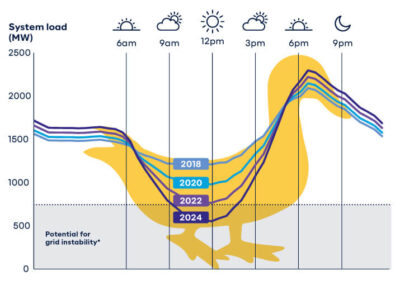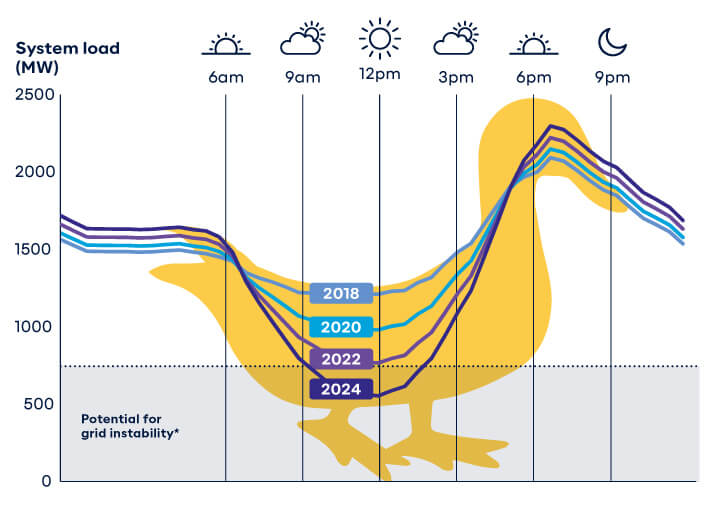![]()
From The Conversation (18/6/24) …
Big batteries are solving a longstanding problem with solar power in California. Can they do the same for Australia?
When you graph electricity demand in power grids with lots of solar panels, it looks a bit like a duck, with high points in the morning and evening (when people are relying on the grid) and a big dip in the middle of the day (when many people use their own solar instead and need less from the grid). This is known as the “duck curve”. While it sounds cute, it’s become a significant challenge for energy utilities worldwide.
That’s because solar stops supplying power to the grid just before the evening surge in demand, when people get home from work. That puts more strain on the grid, and props up the case for the fossil fuel generators, creating economic challenges for utilities.
In the United States, California is showing there is a clear solution – use grid-scale batteries to store excess solar power for use later that evening.
This year, the Golden State has enough battery storage to begin pushing gas out of the grid in the evenings.
This should embolden Australian authorities, who have begun building large-scale battery storage to soak up cheap solar.


